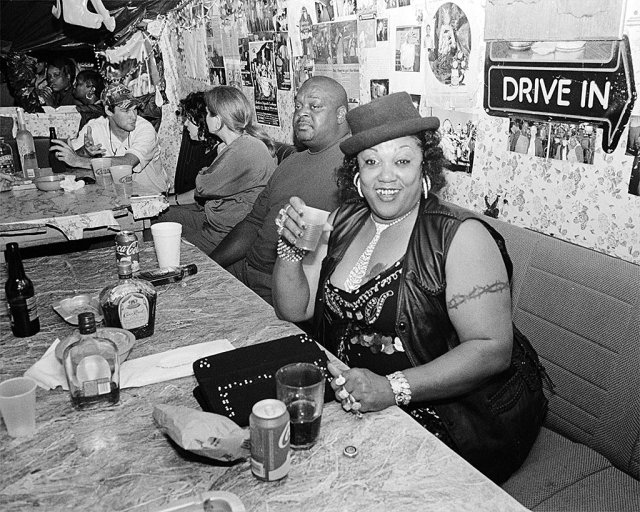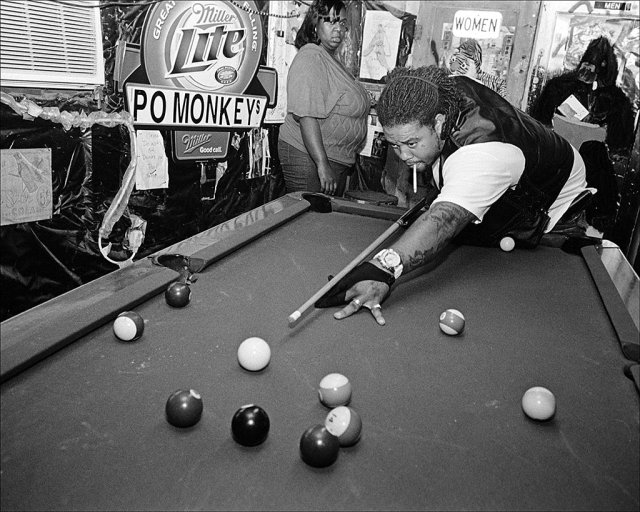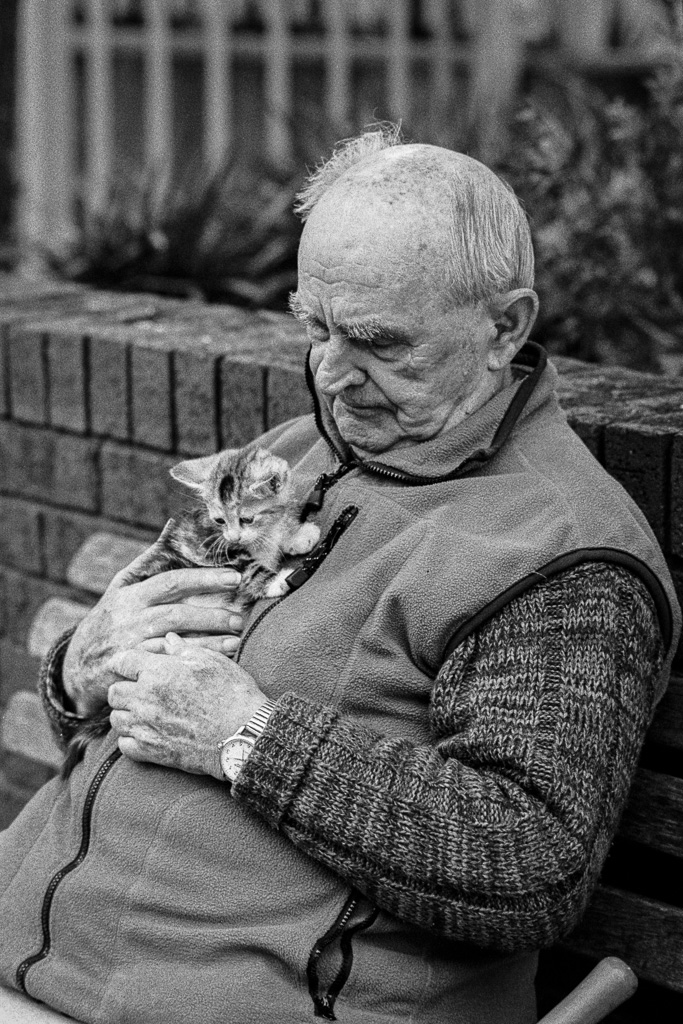Yesterday I took some photos at the local train station. Some were of people congregating in a bus shelter, from a distance.
From closer up there was an elderly gentleman sitting on a bench who looked a bit worried. He saw me take a shot of him, and he engaged me in conversation. He pulled a kitten from his little two wheel 'old lady' shopping cart and explained that he lived in a one bedroom flat and his cat had five kittens, and couldn't look after them all. I had no solution for his problem, but after talking to him for a while I asked if I could have a photo of him with his kitten. He obliged.
I haven't developed the film yet, but there'll be two shots, one I took before and one after our conversation. I wonder which will be better? I'm guessing the one with the kitten, as I've got a story to go with it.
It got me thinking about how I should move forward with street photography (if you can call it that). Candid shots have a truth about them, but it can sometimes feel like you're taking something that doesn't belong to you. Alternately, having engaged this gentleman and taken another shot, I felt legitimized momentarily because I had heard his story. But what good is that, if my motive was only to find a story, without extending any real help to him. Perhaps being a passive observer is better then?
I'm not saying one mode of photography is better than another. I'm just trying to work out why I'm doing what I'm doing, and am curious about everyone else's experience.

















